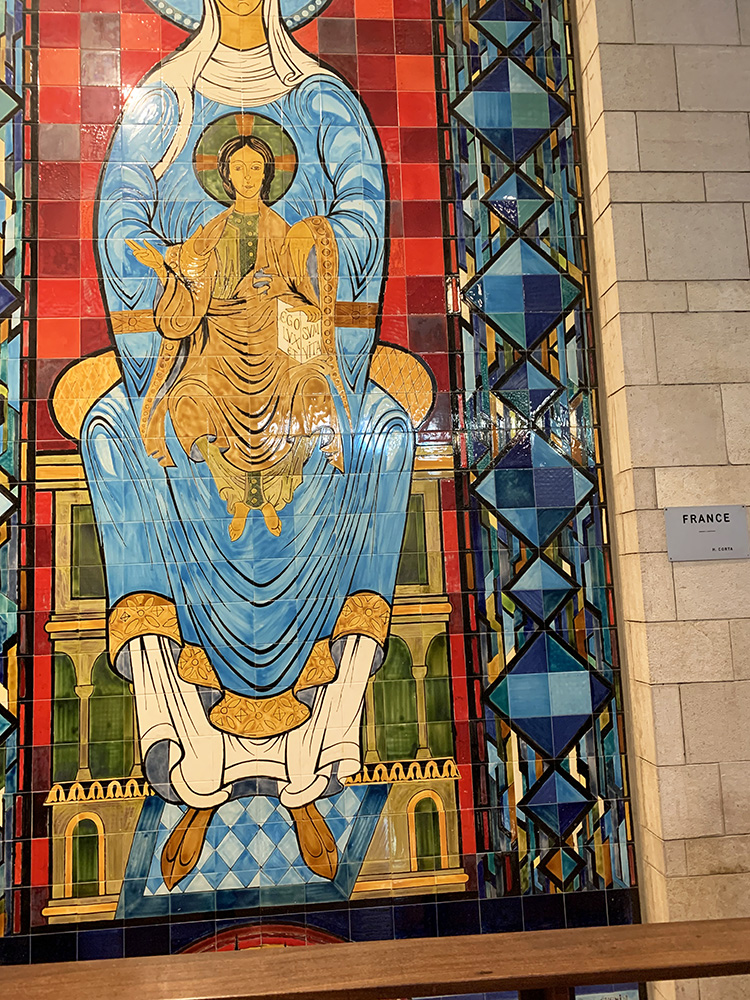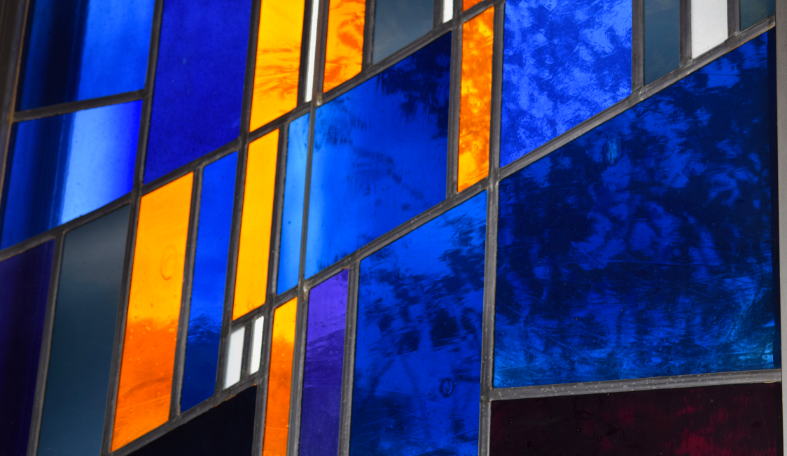We began our second day in hilly Nazareth by visiting the church closest to our guesthouse, the Anglican Christ Church. The rector, Father Nael, described the 150 year-old church’s origins, including the role of England’s King Edward VII in sponsoring its early organization. Father Nael told us he often spoke to his congregation’s young people of his four ‘identities’, i.e., Arab ethnicity, Palestinian nationality, Christian faith, and Israeli citizenship. (His family lived in Nazareth before Israel’s creation but had no identity/travel documents, so thought it wise to obtain Israeli citizenship after 1948.) Father Nael poignantly expressed his wish for Palestinians in Israel to enjoy the same rights and treatment that of Jewish Israelis.
We next visited the Roman Catholic Basilica of the Annunciation, one of the two churches in Nazareth commemorating when the angel Gabriel announced to Mary, a betrothed virgin, that she was to bear a son. (The Basilica places the Annunciation at Mary’s home.) Mary very practically questioned how this could happen, and when it was explained, she gave her assent with guileless trust. People from countries around the world have sent beautiful renderings of Mary in tile, wood, metal, and paint, which adorn the outside grounds and the inside of the Basilica.
We had by now gotten used to multiple denominations competing for pilgrimage narratives in the Holy Land. Our next stop was the Greek Orthodox Church of the Annunciation, which places Mary’s call at a well from which she was drawing water. Of course, they built a church around the spring that fed the well!
One of the highlights of the day was our tour of the Old City market of Nazareth. We were engulfed in the smells of cardamom-infused coffee, fresh herbs, and tasted treats like pita topped with olive oil and an oregano-based spice mix called zatar and sweet ‘bagels’ made with anise. Our guide Ghada, a Palestinian Christian, told us of a recent renaissance of the Old City market, but feared that if too much development took place the traditional character and identity of the market could be lost. In addition to being a tour guide, Ghada runs a handicrafts shop, in which she focuses on selling artisanal goods made mostly by women in Nablus and Hebron. She feels called to support these communities.
After lunch, we headed for Mount Tabor, where the Transfiguration of Christ is commemorated. Up the mountain we went. Many hairpin turns later, we reached the top of the mountain, and perhaps experienced at least the same amazing, earthly views that the apostles and Jesus did that day.
We pray for transformation through our participation in this pilgrimage. As part of transformation, we first need to say “yes.” We also pray that we, like Mary, can go beyond the “yes” and are able to see ourselves differently—to transcend our identities if needed—to follow the Lord’s calling for our lives. Amen.
–Julie Nutter
Renderings of Mary (sent from countries around the world) at the Basilica of the Annunciation, Nazareth


